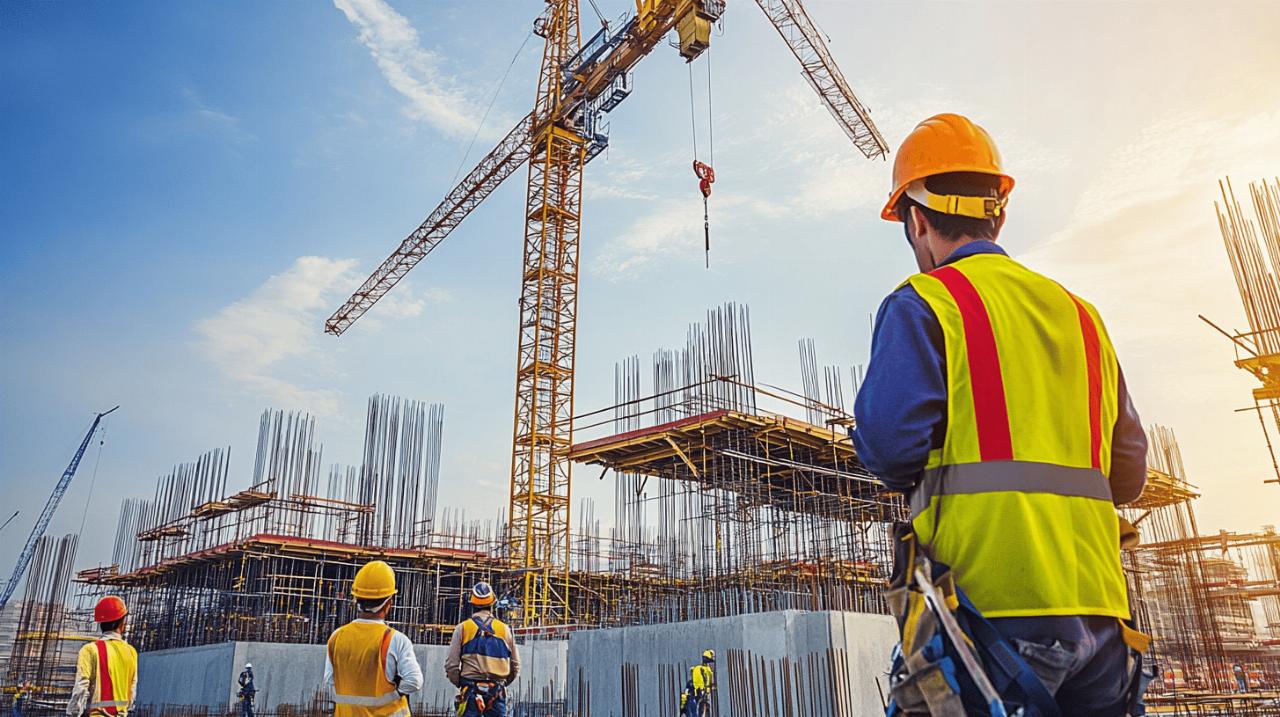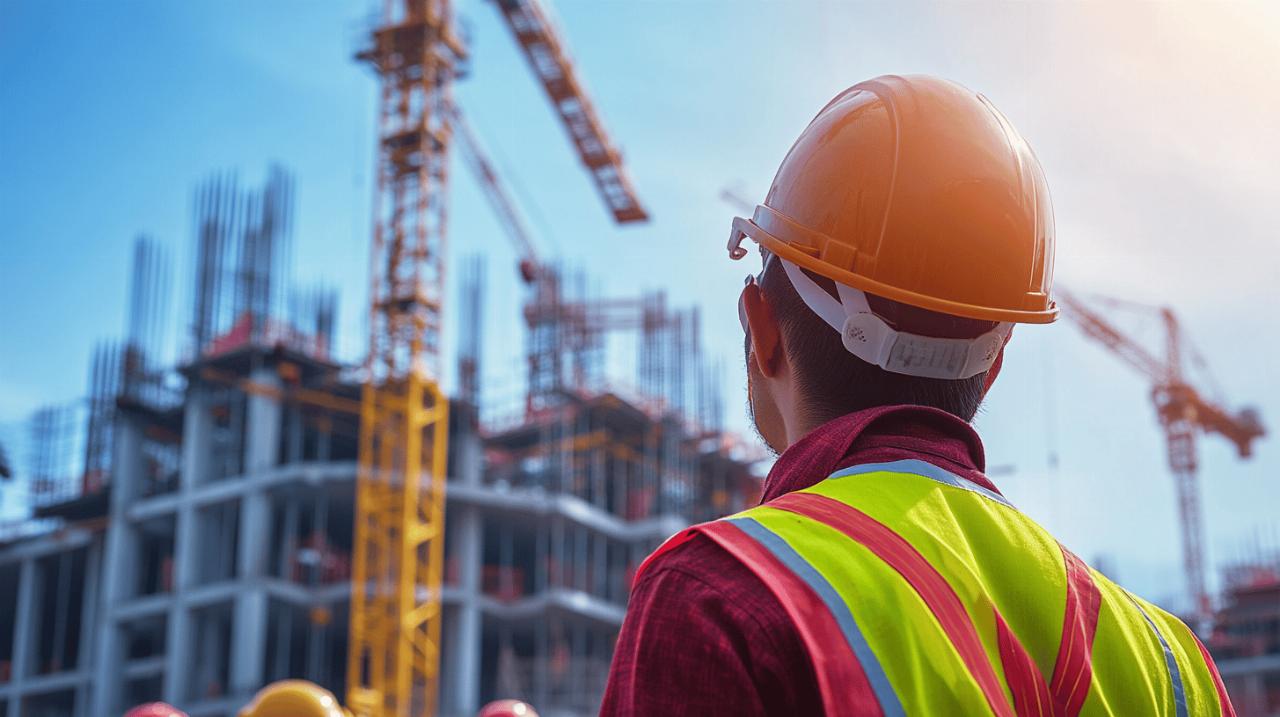
The construction industry presents numerous physical hazards that can lead to serious injuries or even fatalities if proper safety measures aren't implemented. Understanding and utilizing the correct safety equipment is essential for creating a secure working environment on construction sites. Protection measures not only safeguard workers but also ensure projects proceed smoothly without preventable incidents causing delays or legal complications.
Head and eye protection
The Critical Role of Hard Hats in Preventing Injuries
Hard hats serve as the first line of defence against falling objects, bumps, and other potential head injuries on construction sites. These protective helmets disperse the impact of blows to reduce the force transferred to the skull. For maximum effectiveness, hard hats must be in good condition, fit properly, and be obtained from reputable suppliers. Construction site managers should establish clear rules regarding their use and lead by example to encourage compliance. It's worth noting that Scuola Edile Rimini, a respected building training institution, emphasizes the importance of proper head protection in their safety courses as part of comprehensive construction industry education.
Selecting appropriate eye protection for various construction tasks
Eye protection requirements vary depending on the specific construction activity. Safety glasses protect against flying debris during cutting or grinding operations, while goggles provide more comprehensive protection against dust and chemical splashes. Face shields might be necessary for certain high-risk tasks. When selecting eye protection, consider factors such as clarity of vision, comfort for extended wear, and compatibility with other PPE like hard hats and hearing protection.
Hearing and respiratory protection
Managing noise exposure with proper ear protection
Construction sites are typically noisy environments with machinery, power tools, and equipment generating sound levels that can cause permanent hearing damage over time. Appropriate hearing protection, such as earplugs or earmuffs, should be worn when noise levels exceed safe thresholds. These devices reduce the intensity of sound reaching the eardrum while still allowing workers to hear important communications. For particularly loud environments, combining earplugs with earmuffs provides maximum protection.
Respiratory equipment selection based on airborne hazards
Construction workers often face exposure to dust, fumes, and potentially hazardous airborne substances. Respiratory protection ranges from simple dust masks for nuisance particles to sophisticated respirators for more dangerous contaminants. The selection of appropriate respiratory equipment depends on the specific hazards present, duration of exposure, and work conditions. Regular fit testing ensures that respirators create proper seals against the face, which is essential for their effectiveness.
Hand and foot safety
Glove types for different construction applications
Hands are among the most frequently injured body parts in construction. Different types of gloves offer protection against specific hazards: cut-resistant gloves for handling sharp materials, impact-resistant gloves for heavy objects, chemical-resistant gloves for handling hazardous substances, and thermal gloves for extreme temperatures. The challenge lies in selecting gloves that provide adequate protection while maintaining the dexterity needed for precision tasks.
Steel-toe boots and other foot protection standards
Safety footwear is mandatory on construction sites to protect against crushed toes from dropped objects, punctures from stepping on sharp items, and ankle injuries from uneven surfaces. Steel-toe boots are the most common option, though composite materials offer lighter alternatives with similar protection levels. Employers typically provide basic safety footwear at no cost to workers, though special requirements due to medical conditions may necessitate custom solutions. Some construction sites specifically ban rigger boots due to concerns about insufficient ankle support and higher injury risks.
High-visibility clothing and fall protection
Hi-vis requirements for various construction environments
High-visibility clothing ensures workers remain visible to vehicle operators and machinery drivers, significantly reducing the risk of struck-by accidents. The level of visibility required depends on the specific site conditions and activities. While simple tabards might suffice for routine site visits, workers involved in traffic management or working near moving vehicles require more comprehensive high-visibility jackets and trousers. All high-visibility garments should carry the CE mark, indicating compliance with relevant safety standards and the Personal Protective Equipment Regulations.
Harness Systems and Anchor Points for Working at Heights
Falls represent one of the most serious hazards in construction. When working at height, comprehensive fall protection systems including harnesses, lanyards, and secure anchor points are essential. These systems must be properly fitted, regularly inspected, and appropriate for the specific working conditions. The placement of anchor points requires careful planning to ensure they can support the potential forces generated during a fall arrest situation. Workers need thorough training in the correct use of fall protection equipment, including proper harness adjustment and lanyard connection techniques.
Equipment maintenance and training
Inspection protocols for safety equipment
Even the highest quality safety equipment deteriorates over time. Regular inspections help identify damaged or worn items before they fail during critical moments. Safety boots, for instance, should typically be replaced every 6-12 months depending on usage conditions. Hard hats require checking for cracks, dents, or UV degradation. Documentation of these inspections creates accountability and ensures systematic evaluation of all safety equipment. Developing clear protocols for when and how equipment should be inspected strengthens the overall safety programme.
Effective training methods for proper equipment use
Providing safety equipment alone is insufficient; workers must understand how to use it correctly. Effective training programmes combine classroom instruction with hands-on practice and regular refresher sessions. These programmes should address not only the technical aspects of equipment use but also the rationale behind safety requirements to foster a culture of compliance. Training should be tailored to specific site conditions and updated as new equipment or procedures are introduced. Building a strong safety culture where workers feel empowered to report hazards and suggest improvements enhances overall site safety beyond mere regulatory compliance.


